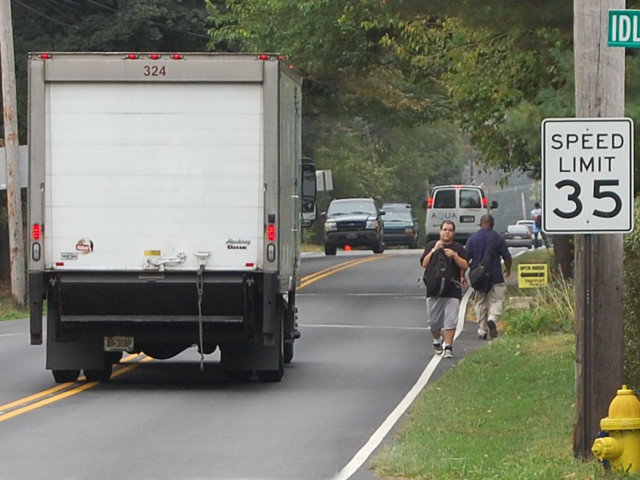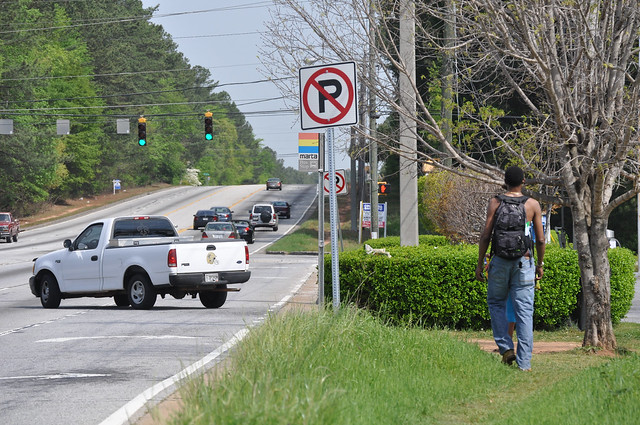Surgeon General: building walkable communities is essential to our health
Yesterday the Surgeon General issued a powerful call-to-action that focuses on improving public health by encouraging walking and the creation of more walkable places.
It was an inspiring moment to see the nation’s top doctor get in front of a crowd in Washington, DC (with thousands of others watching online) and urge Americans not just to get more exercise, but also to rethink how we build and grow our communities in ways that can encourage more walking by making it an attractive and convenient option.
Americans do not get enough physical exercise, he said. Chronic diseases — including diabetes, heart disease, cancer and obesity — are responsible for seven in 10 deaths per year, and cost us trillions of dollars. We can reduce the risk of those diseases to our health, however, with one simple action: walking. An average of 22 minutes of walking per day — about two and a half hours per week — can significantly reduce risk.
But for too many Americans, walking is not safe, convenient or easy.Communities (especially lower-income neighborhoods) may suffer from a lack of sidewalks, crosswalks, and the basic building blocks of what makes a walk possible. As many as 30 percent of Americans report that their communities have no sidewalks.
For decades, we built scores of communities without walking in mind, designing out the most common form of transportation from our daily lives and assuming that we’d be better off having to make the bulk of our daily trips with a car, which our federal transportation policy supported (through the creation of the interstate system and numerous other policies.)
But enough ink has been spilled looking backward at the numerous decisions that got us here. Instead, how can we move forward? How can we make it easier for more people to walk each day and stay healthier?
“We can change that,” U.S. Surgeon General Dr. Vivek Murthy says. “We can change it by city planners, transportation professionals and local government leaders working together to improve the safety and walkability of neighborhoods for people with all abilities.”
The solution can be found in part by recapturing the wisdom of how we once designed neighborhoods and towns of all sizes with walking as a central feature. The Surgeon General called on local governments and city planners to design their towns so that walkers have safe, easy places to walk to their destinations. As we covered yesterday in a preview of the call to action, we know that there is huge demand for, and economic returns to be had by, building places where walking is a central part of the design:
Since Indianapolis’s Cultural Trail, a high-quality biking and walking trail, opened in 2008 the value of properties within a block have increased an astonishing 148 percent. Last week, the Atlanta-Journal Constitution published a special packageabout the amazing demand for homes near the still-in-progress Beltline project that will eventually encircle the city with trails and transit. Nashville’s metropolitan planning organization recently began considering health criteria as they select transportation projects in the hopes of helping improve the health of residents over the next few decades as they grow. Washington State adopted a Vision Zero plan to reduce pedestrian deaths to zero. Making their vision a reality includes not just educating drivers about pedestrian and bike safety but also re-designing streets and roads to slow traffic and give folks walking and biking safe and attractive facilities to use.
“Today we have the opportunity to reclaim the culture of physical activity that we once had,” the Surgeon General said. “Today we are here to make that commitment that in America everyone deserves a safe place to walk and to wheelchair roll.”
Designing cities and towns to encourage walking involves smart planning of public transit and cycling infrastructure because both amenities extend the range that the average citizen can walk. Smarter transportation planning puts the majority of a person’s needs within walking distance, from errands to school, work and everything else. And the more we walk, the better our mood, the safer our streets and the healthier we become.
Tyler Norris, vice president of Total Health Partnerships at Kaiser Permanente, one of the many guests on hand to extol the benefits of the Surgeon General’s call-to-action, closed the day with some inspiring words about the numerous benefits of walking. Walking, he said, is good not only for individuals, but for communities:
“We were born to walk. Our bodies are designed to walk. There is nothing we can do that is simpler or more cost effective for our health and well-being than walking. Nothing is a better contributor to creating a healthy community than to make the public and private investments that are essential for the infrastructure for walking and rolling [in wheelchairs] throughout our communities. Every mayor and economic development leader will tell you that a walkable community is also a more economically vibrant and prosperous community.”
With Congress back in session now, it begs the question: Will policymakers in the Capitol heed the call from the nation’s top doctor and begin to align more of our country’s transportation policies with the need to get active? Will the House’s draft multi-year transportation bill — expected to be released this month — help or hurt state and local efforts to meet this demand for more walkable places?
This call to action could be the start of a transformation of how Americans think about the impact that the design of their towns and cities have on their health, but Congress will have to play a part.






















3 Comments